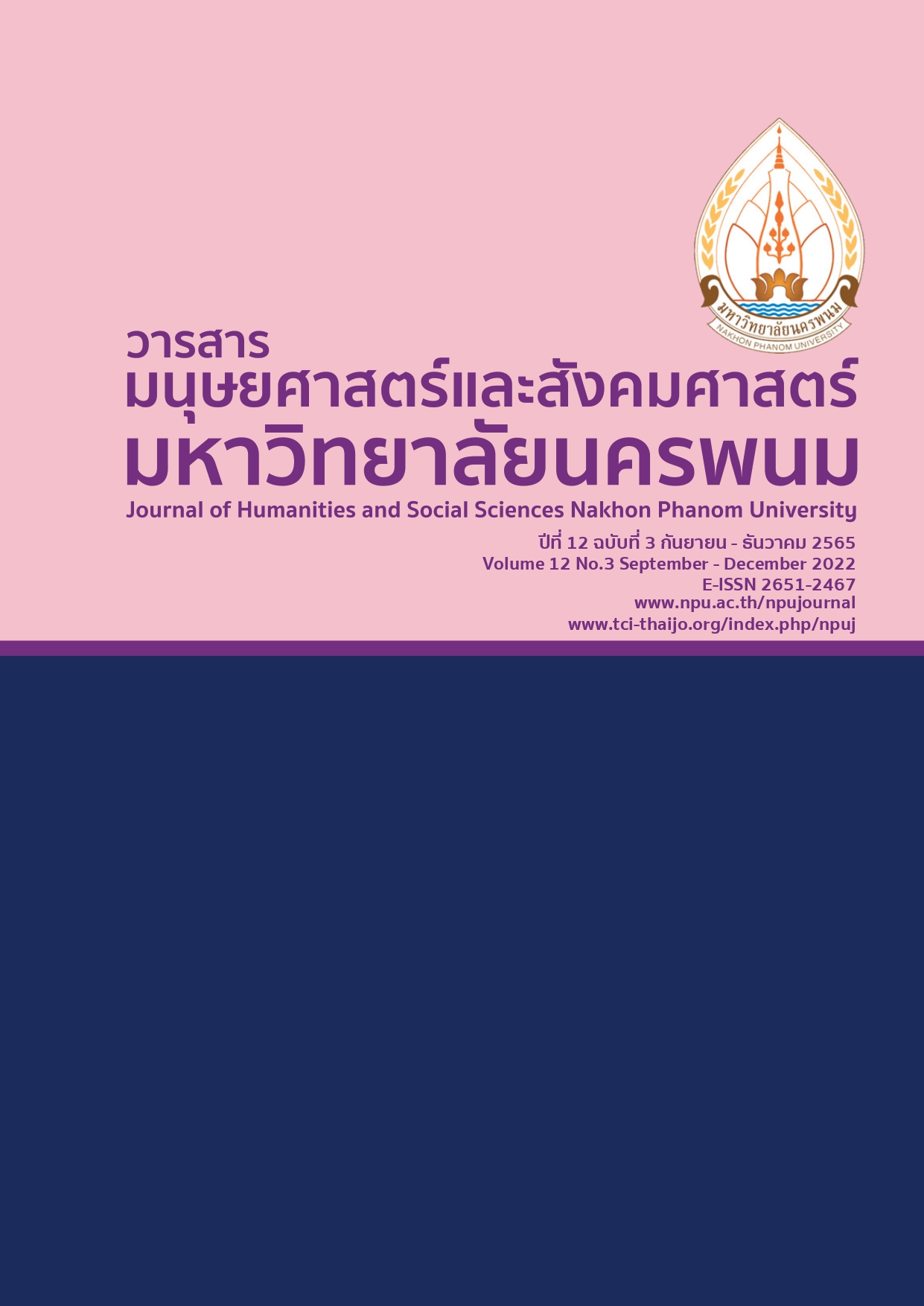Translation Errors in Translating Past Participial Phrases
Main Article Content
Abstract
The research aimed to study the characteristics or the patterns of translation errors in past participial phrases in English-Thai translation. This research used a qualitative approach. The data were obtained from the translation tests collected from the sample group of 230, English major students, Burapha University. The result found that the patterns of translation errors in past participial phrases were characterized into 11 patterns, namely 1) deletion or non-translation of past participial phrases 2) translation of past participial phrases into independent clauses 3) translation of past participial phrases into active voice 4) translation of past participial phrases into adjective clauses 5) translation of past participial phrases into prepositional phrases 6) translation of past participial phrases into adverbial phrases 7) translation of past participial phrases into verb phrases 8) translation of past participial phrases into noun phrases 9) translation of past participial phrases into question particles 10) malfunctions of clause-linking words and 11) inappropriate or unnatural word choices in a target language. This research showed that the patterns of translation errors could be primarily illustrated by the syntactic accounts as well as the uses of a target language.
Article Details

This work is licensed under a Creative Commons Attribution-NonCommercial-NoDerivatives 4.0 International License.
References
Arsairach, S., Juntiya, T., and Kakaew, J. (2017). Problems of Translation and Strategies for
English into Thai Academic Text Translation of Students Majoring in English Education. Journal of
Education and Human Development Sciences, 1(1), 71-85.
Biber, D., Johansson, S., Leech, G., Conrad, S., and Finegan, E. (1999). Longman Grammar of Spoken and
Written English. Essex: Pearson Education Limited.
Chaiyo, P. (2020). Errors in Translating Articles from English into Thai: Translation Process or
Grammatical Knowledge. International Journal of Scientific and Research Publications,
(7), 725-731. http://dx.doi.org/10.29322/IJSRP.10.07.2020.p10380
Hatim, B. (2013). Teaching and Researching Translation. (2nd ed.). London: Routledge.
Pinmanee, S. (2005). Kān plǣ khan sūng [Advanced Translation]. (2nd ed.). Bangkok: Chulalongkorn University
Press.
Pinmanee, S. (2009). Plǣ dai plǣ dī [Be Joyful in Translation]. (2nd ed.). Bangkok: Chulalongkorn
University Press.
Pinmanee, S. (2012). Plǣ phit plǣ thūk [Translation: from Wrong to Right]. Bangkok: Chulalongkorn
University Press.
Saibua, S. (1997). Lakkān plǣ [Principles of Translation]. (6th ed.). Bangkok: Thammasat
University Press.
Suphon, D. (2002). Thritsadī læ konlawithī kān plǣ [Theory and Strategies of Translation]. (5th ed.). Bangkok:
Chulalongkorn University Press.
Swan, M. (2016). Practical English Usage. (4th ed.). Oxford: Oxford University Press.
Wimonchalao, W. (2000). Khūmư̄ sō̜n plǣ [Translation Teaching Manual]. (8th ed.). Bangkok:
Chulalongkorn University Press.
Yaisomanang, S. (2020). The Comprehension of English Syntax and Grammar That Affects
English-Thai Translation among English Majors at Burapha University (Research Report).
Chonburi: Burapha University.


